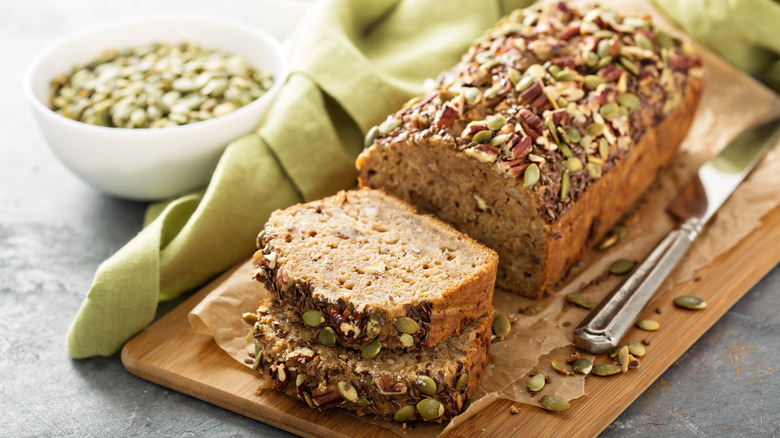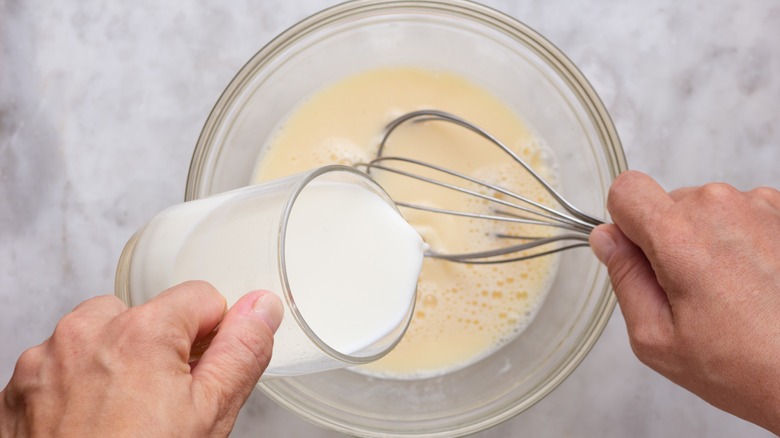The Reason Gluten-Free Recipes Often Require More Liquid
If you've ever noticed that gluten-free baked goods recipes tend to call for a substantially larger amount of liquid than their conventional counterparts, there's a good reason for that: They need more liquid to reach a similar consistency and mouthfeel of a gluten-containing baked good.
There's a lot of room for error when it comes to gluten-free baking, much of which comes down to the flour involved. After all, gluten-free flour does not behave the same way as wheat-based flour, which provides structure, texture, and binding, as well as elasticity to food. Instead, it tends to absorb more liquid due to the presence of fine starches, which are like sponges, soaking up whatever liquid they come into contact with. To counteract this, a well-written gluten-free recipe will call for various replacements to keep up the moisture level and consistency of the batter.
Why gluten-free recipes call for fine starches
In baked goods, subbing in just one sole gluten-free flour for wheat-based flour will not suffice. Fine starches such as xantham gum, arrowroot, tapioca starch, and ground flax or chia seed are able to take on a gluten role. They help bind the ingredients together and offer the same chewiness a conventional baked good does. However, these are the starches that soak up the liquid. Most recipes will either up the amount of liquid used, add in puréed fruit or applesauce, or include extra eggs, which also help with structure. Gluten-free batters are usually looser than batters with gluten, but this extra moisture will burn off in the oven.
Gluten also helps baked goods rise by trapping the gas bubbles produced by the leavening agent. For this reason, gluten-free recipes will probably also call for larger amounts of leavener than conventional baked goods.

